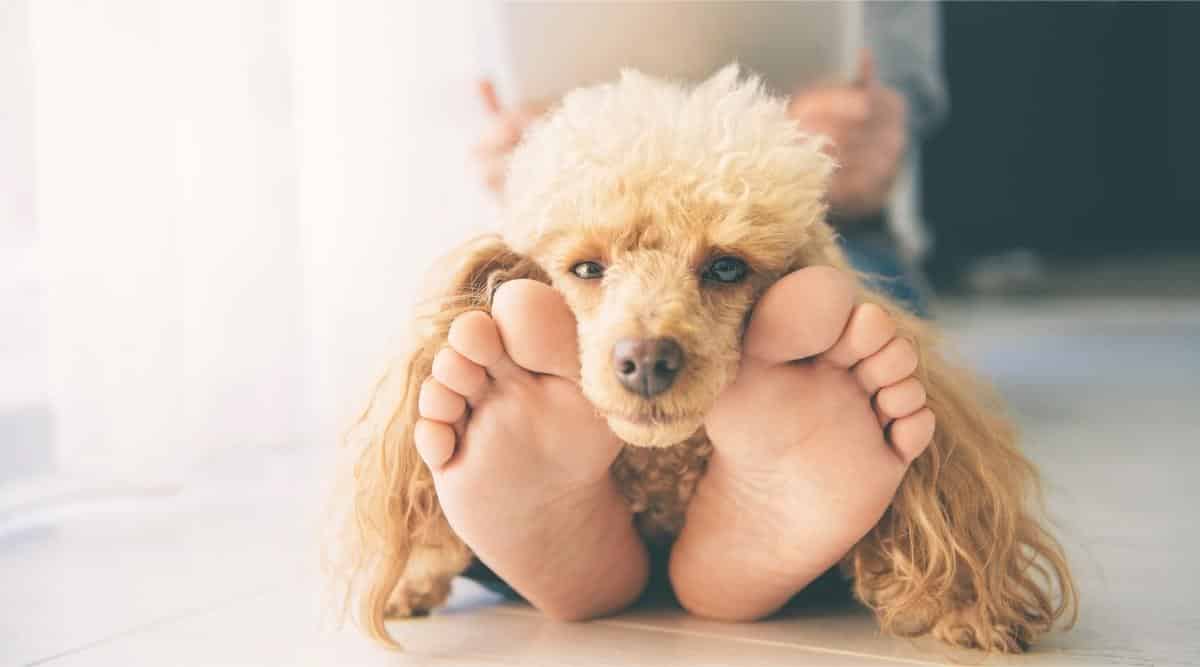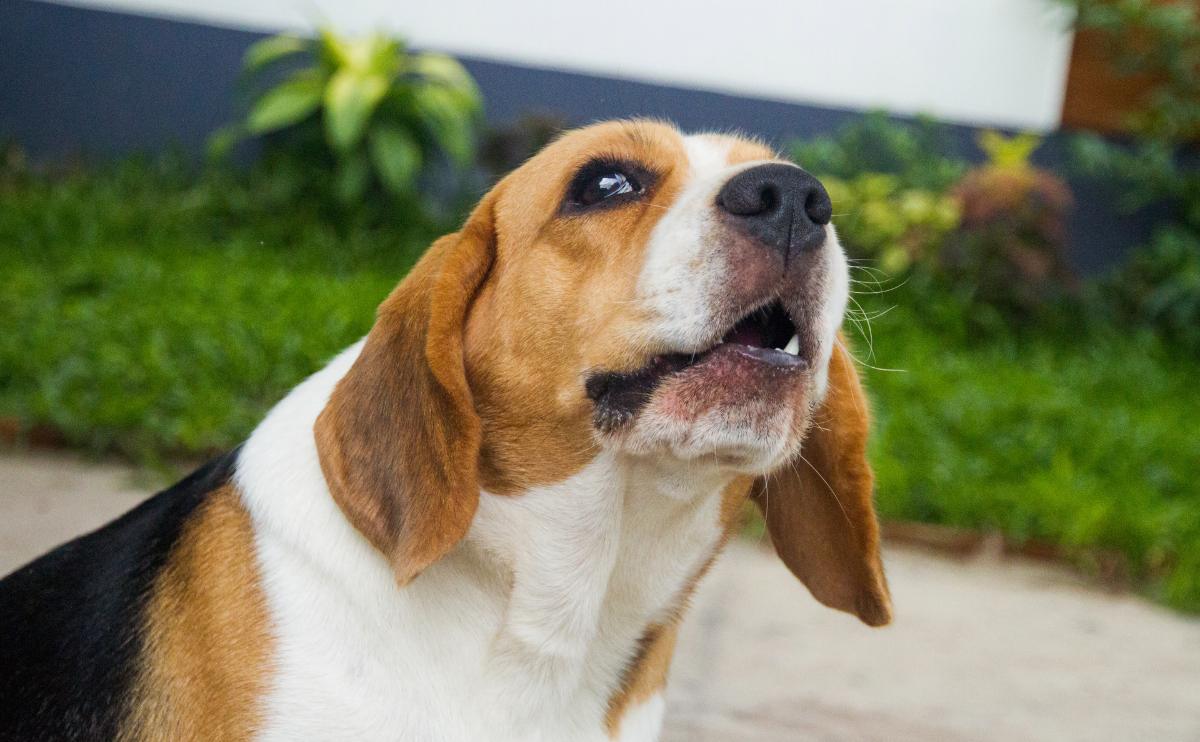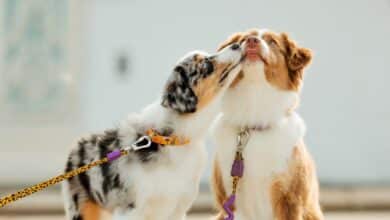Why Is Your Dog Marking Territory? Unraveling the Mystery
When you purchase through links on our site, we may earn a commission. Here’s how it works.
Are you tired of cleaning up after your dog’s constant marking? It can feel like a never-ending battle, especially in places you’d rather keep pee-free, like behind the couch or the back of your closet. While it may look like defiance, marking is actually a natural behavior driven by instinct, communication, and sometimes stress or insecurity. Dogs use urine to claim territory, signal their status, and respond to environmental changes. Whether your dog is leaving his signature indoors, out on walks, or both, getting to the root of the behavior is key.
Table of Contents
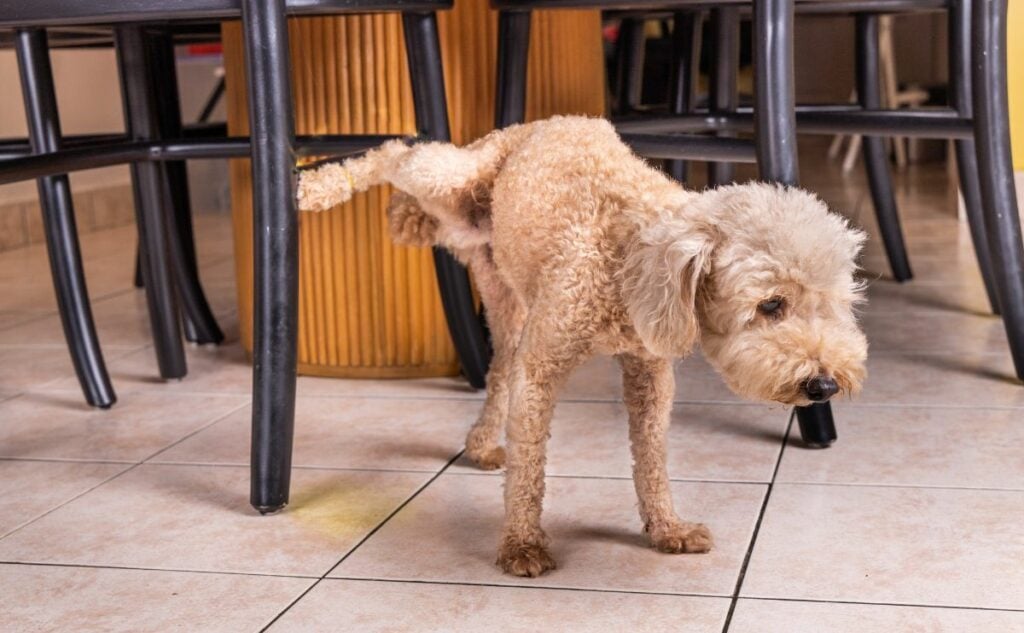
From Backyard to Living Room: Kopa’s Marking Mayhem
Why would my dog mark their territory in the house? That’s exactly what ran through my mind after adopting my one-year-old pup, Kopa. Within the first few hours of bringing him home, he marked in the same room three times.
Kopa had spent his early life as an outdoor dog, so giving him free roam of the house was like handing him a blank canvas. He saw carpets and furniture not as comfy places to nap but as territory to claim. Even though he was neutered a little over a month before we adopted him, that didn’t stop the instinct to mark what he saw as his. I quickly realized that this wasn’t just a potty-training issue. It was a behavioral challenge rooted in instinct, anxiety, and adjustment.
To say I was frustrated with his marking was an understatement. I knew this was his instinct, but cleaning up the messes was a nightmare. How do I stop his marking so I can trust him in the house? Here are some tips on why dogs mark their territory and how to stop it.
Pee-Mail and Power Plays: Why Dogs Mark Their Turf
Have you ever caught your dog lifting a leg on the corner of your couch and wondered if he’s trying to drive you slowly insane? While it might feel personal, rest assured: it’s not revenge. It’s instinct. Dogs mark with urine, and occasionally feces, to send messages to other animals.
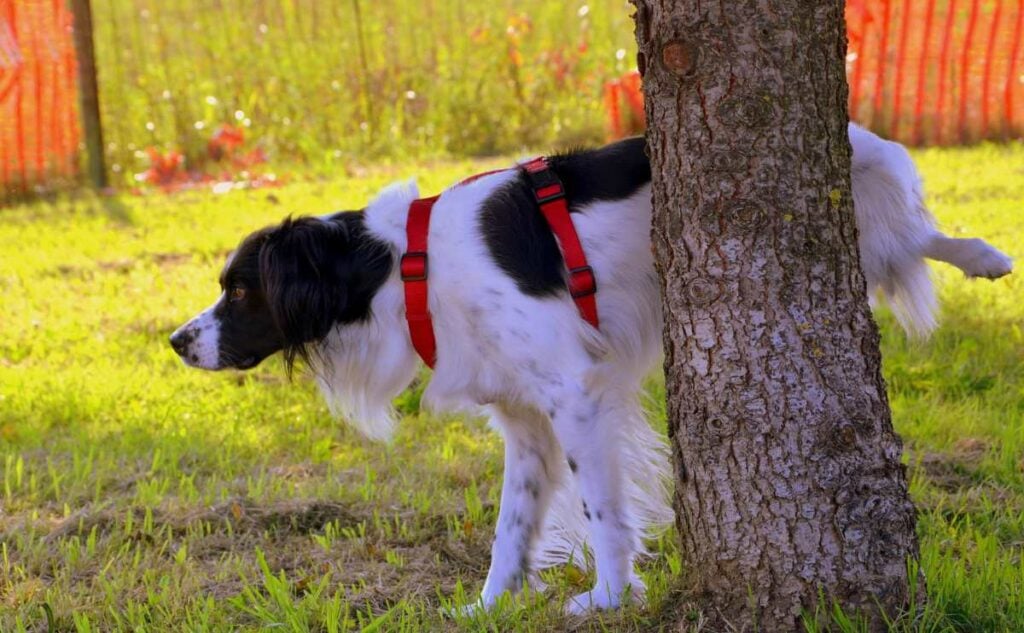
This scent-marking behavior goes way back to their wild ancestors. Leaving a pee spot behind in the canine world says, “I live here,” or “I was here first.” It can also signal, “I’m single and ready to mingle,” depending on the dog’s reproductive status.
Researchers have discovered that dog urine contains loads of information, including sex, age, mood, and social rank. One quick sniff and another dog can tell whether your pup is a tough guy, a nervous newbie, or a flirty heartbreaker.
Changes like a move, a new pet, or even rearranging the furniture can trigger territorial instincts. While your dog’s indoor peeing spree might feel like a personal insult, it’s really just biology doing its weird little thing.
Will Neutering Fix It? The Surprising Truth
If you’ve got a leg-lifting, wall-spraying dog, one of the first questions you might ask is: “Would neutering stop this marking madness?” And it’s a good question because hormones often play a starring role in marking behavior.
Unneutered male dogs are the biggest culprits. Their testosterone levels are higher, which fuels the instinct to claim territory, impress potential mates, and let every other dog in the neighborhood know who’s boss. Spaying or neutering can reduce or eliminate this behavior, especially if the procedure is done before the habit becomes a well-practiced routine.
But here’s the twist: neutering isn’t a magic switch. Neutered male and female dogs, intact or spayed, can also start marking. If a dog has been marking for a while, it may have turned into a learned behavior that sticks around even after the hormones calm down. That’s why pairing neutering with training, management, and a solid cleanup strategy is essential. In other words, surgery might be step one, but it’s not the whole fix-it kit.
Is It Health or Habit? When Medical Issues Are to Blame
Before you assume your dog is waging a territorial war on your furniture, take a pause. Some dogs aren’t marking on purpose at all; they’re dealing with a medical issue, and their bladder simply didn’t RSVP to their brain in time. One common culprit is incontinence, especially in older dogs. This isn’t your pup making a bold territorial statement. It’s more like, “Oops, didn’t mean to do that,” and often, they don’t even realize they’ve left a puddle behind.
Another frequent offender is the dreaded urinary tract infection (UTI). These sneaky little infections can cause your dog to pee small amounts over and over, like they’re trying to write a novel one drop at a time. A classic red flag? If your dog is licking their genitals like it’s a new hobby, it’s probably time for a vet visit.
And don’t forget, certain diseases and medications, like those for heart conditions or kidney disease, can crank up the urgency and frequency of urination. If your dog’s bathroom habits have changed suddenly and dramatically, always rule out medical causes before breaking out the behavior charts.
When Pee Happens: Uncontrollable Urination Explained
Not all accidents are about dominance or territory. Some dogs just can’t help it, literally. There are three main types of what experts call “uncontrollable urination,” and each one has its own cringeworthy charm.
- First up: submissive urination. This is when your dog pees during greetings, playtime, or when being scolded. If your pup cowers, flattens its ears, or tucks its tail while peeing, they’re not being defiant; they’re saying, “Please don’t be mad; I come in peace.”
- Then there’s excitement urination, aka the party pee. Some dogs just get so thrilled to see you (or their leash or treat bag) that their bladder throws a confetti cannon of urine in celebration. It’s not intentional; it’s just that their excitement overrides everything else, including dignity.
- Last but not least, anxiety urination. Dogs overwhelmed with fear or stress may pee because their nervous system goes haywire. Think of anxiety urination as your dog’s nervous system hitting the panic button. Sometimes the stress is so overwhelming that they lose control of their bladder.
When Something New Sparks a Marking Frenzy
So your dog has been perfectly behaved indoors for months, and now suddenly, he’s marking your brand-new sofa like he’s signing a guest book. What gives? Chances are, something in the environment has changed, and your dog is on high alert.
Dogs are creatures of habit, and new elements in their space can throw them off their game. This doesn’t just mean a new baby or a visiting cousin. Your dog might mark if you bring in a new chair, switch rugs, or even rearrange furniture. That IKEA shelf you love? Your dog may see it as a mysterious intruder that must be claimed immediately with pee.
It’s not just the home, either. Dogs may mark in familiar outdoor spaces if they notice unfamiliar scents. A new dog at the park, a strange cat in the yard, or even a neighbor’s scented garden gnome could trigger a sudden marking spree.
To your dog, marking is their way of saying, “I noticed this change, and I’d like to claim it as mine officially. Thank you very much.” It’s not personal. It’s just… very inconvenient.
Putting an End to the Pee Parade: How to Stop Outdoor Marking
Taking your dog on a walk shouldn’t feel like you’re being dragged through a sniff-and-spray tour of the neighborhood. If your pup insists on marking every mailbox, lamppost, and suspicious-looking bush, it might be time to rethink your walking strategy.
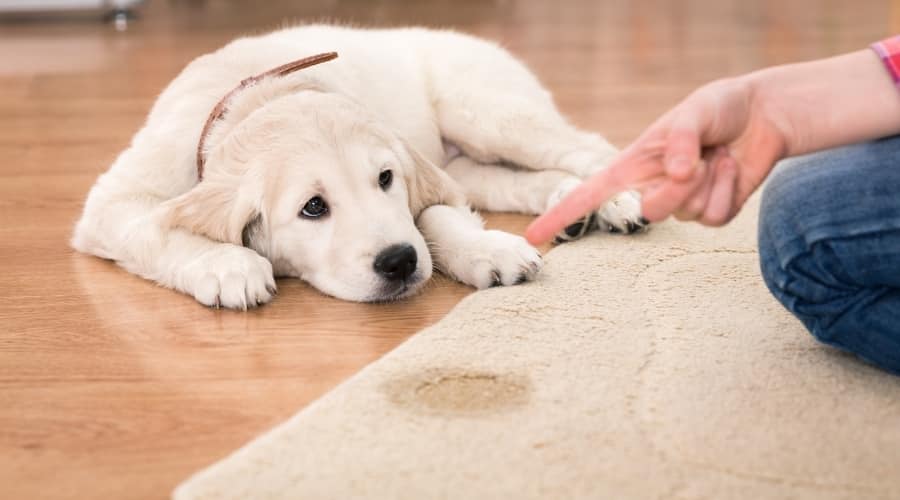
One of the simplest ways to cut down on outdoor marking is to shorten the leash. When dogs have too much freedom, they turn into four-legged explorers on a mission to “sign” every surface. But walks aren’t supposed to be their personal tagging expedition. They’re a shared activity. By keeping your dog close and walking with purpose, you send the message that you are leading the walk, not them.
Try a “business walk” approach. That means fewer zigzags and sniff stops and more focused forward movement. Every so often, stop in one spot, plant your feet, and give a clear command like, “Go potty.” Say it with confidence, like you’re the CEO of bathroom breaks. Don’t let your dog wander in circles like they’re auditioning for a Broadway role. Teach them to go when and where it’s appropriate.
This method helps reduce constant marking, builds better leash manners, and strengthens your bond. Plus, you’ll stop looking like the person who’s constantly apologizing to shrubs, trash bins, and other people’s front yards.
Potty Like a Pro: Teaching Your Dog Where (and When) to Go
Dogs aren’t born knowing where the designated bathroom zone is. To them, the entire world is fair game. That’s why teaching your dog to potty on command can be a game-changer, especially if they’re prone to marking.
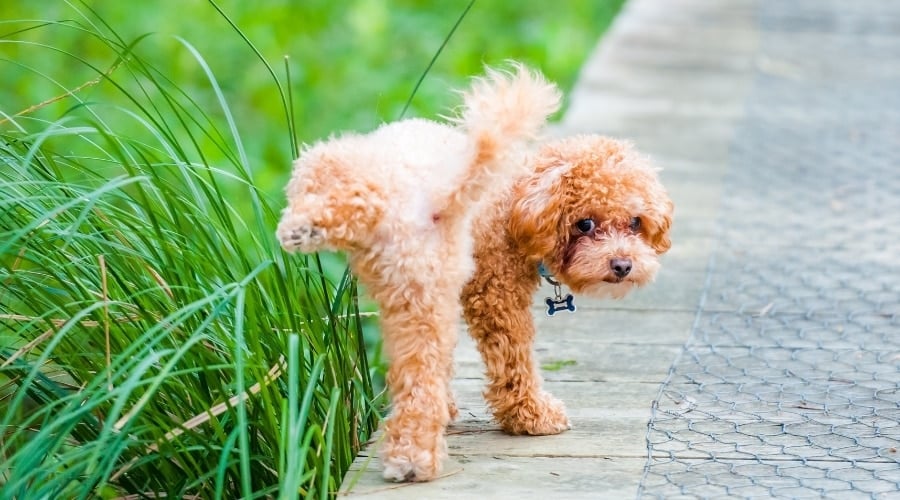
Start by letting your dog sniff around a specific spot. Give them a moment to find the perfect patch of grass. (Yes, even if it feels like they’re choosing between real estate listings.) Once they do their business, throw them a party. Use a happy voice, offer praise, maybe even toss them a treat. Reinforcing this behavior is key.
The magic comes when you pair the action with a command like “Go potty.” Say it each time with your feet firmly planted so they learn that this isn’t a free-for-all pee parade. You’re not just letting them go. You’re giving them permission. I’ve used this trick with my dog, Kopa, and once he caught on, it was like flipping a switch. He knows that when I say “go potty,” it’s business time, not a sniff-n-spray mission.
When Your Dog Turns Your Lawn Into a War Zone
You’ve worked hard on that lawn, and now it looks like a spotted battlefield of brown patches. The nitrogen in dog pee acts like a fertilizer, but too much of it burns the grass. It’s like dumping an entire bag of Miracle-Gro on one tiny spot. That sounds great if you want that polka-dot lawn look, but not if you want a lush, soft place to spend time with your pup.
Check out these tips for saving your lawn from dog urine (and your sanity). From watering down pee spots to switching up your dog’s diet, a few tricks can help keep your yard green and your dog guilt-free.
Wait—Girls Mark Too? Meet Sally, the Sprayer
When I first got my dog, Sally, I assumed only male dogs marked. So when she kept stopping every few minutes on walks to “go potty,” I figured she just had a small bladder or was overly hydrated. It turns out that Sally wasn’t peeing out of necessity; she was marking and determined to leave her scent like a four-legged graffiti artist.
After enrolling in obedience classes, I learned the difference between peeing and marking. More importantly, I learned more about how to stop it. With a combination of leash control, the “go potty” command, and consistency, Sally now does her business with purpose, no more stop-and-squirt routines every 15 feet. Girl dogs can be just as territorial as boys, and with a little training, they can also learn when to mark the world… and when to just walk past it.
Indoor Marking: When Your House Becomes a Toilet
Let’s be real: few things are more maddening than stepping into a puddle and realizing your dog has peed again in the house. Whether it’s your favorite rug or a mysterious spot behind the couch, indoor marking feels like a betrayal, especially when your dog looks you dead in the eye while doing it.
If your home is starting to smell like a fire hydrant, don’t panic. There are ways to stop it. From identifying triggers to cleaning properly and managing your dog’s freedom, there’s hope. Check out these tips to get your dog to stop marking indoors and finally reclaim your home from the reign of pee.
House Training or Home Turf War? Let’s Fix It
If your dog treats your living room like a restroom, it’s time to hit reset on their potty routine. Start by taking your dog outside every one to two hours, even if it feels excessive. Yes, you might start questioning your social life, but frequent breaks help prevent accidents and give your dog plenty of chances to get it right. Once you get a feel for how long your pup can hold it without redecorating your floors, you can gradually space out those trips. Bonus tip: always reward your dog with praise or a treat when they do their business outside. Dogs love a good ego boost.
Keep your dog on a leash inside the house for the first two weeks of this training. That’s right, treat them like your tiny four-legged shadow. This keeps them from sneaking off to mark that one corner they think you don’t know about. It also helps you catch any signs they need to go before it’s too late. As the days pass and your dog earns your trust (and stops peeing on things you love), you can slowly grant more freedom. Think of it like unlocking levels in a video game, with each pee-free day getting them closer to full house access.
Here’s the golden rule: consistency is everything. As a rule of thumb, teaching a new habit to a dog usually takes about two weeks of focused, no-nonsense effort. So don’t get discouraged if your dog doesn’t transform overnight. Accidents happen; when they do, skip the scolding. Clean it up thoroughly with an enzymatic cleaner and move on. With patience, a leash, and more potty breaks than you ever thought possible, your dog can learn that the bathroom stays outside where it belongs.
Is Your Dog Marking or Peeing?
Peeing is about emptying the bladder, while marking is more about sending a message, usually with just a few drops. Dogs mark to claim territory, show social status, or respond to environmental changes. If your dog just went potty and then lifts a leg again five minutes later, that’s probably marking, not a full-bladder emergency.
Watch the video below to determine if your dog is marking or peeing.
Nature’s Miracle No More Marking Spray
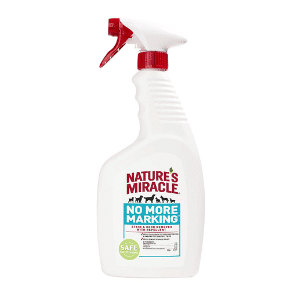
Nature’s Miracle No More Marking Spray is a stain and odor eliminator and a marking deterrent. It is guaranteed to work, or you get your money back. How does it work as a dog marking deterrent spray? The spray leaves a lemongrass and cinnamon scent that discourages dogs from marking the same spot again.
Price
What Not to Do When Your Dog Marks
We know how frustrating it can be if your dog is marking in your home. The critical thing to remember is never to punish your dog. If you return home and find that your dog has marked areas of your home, you should clean up the mess (with the spray above) and move on. A delayed punishment is unclear to a dog, and he won’t understand what he’s being punished for.
Caught Your Dog in the Act? Here’s How to React
If you catch your dog in the act of marking, you can address the unwanted behavior with a gentle but firm “no” or “bad dog” so they correlate that behavior as undesirable. If there’s time, take your dog outside to finish his business (although he might not always go potty once out). You might clap loudly or fill a jar with change and shake it if the dog marks. These noises will startle the dog and potentially stop him.
How Long Can My Dog “Hold It”?
Most adult dogs can hold their pee for about 6 to 8 hours, though some can stretch it a bit longer depending on age, health, and activity level. On the other hand, puppies have much smaller bladders and less control, so they usually need a potty break every 1 to 2 hours, especially during training. A general rule for puppies is that they can hold it for about one hour per month, so a 4-month-old pup might last around 4 hours.
Keep in mind that holding pee too long isn’t ideal, even for healthy adult dogs. It can increase the risk of urinary tract infections, bladder issues, and discomfort. That’s why most vets recommend giving dogs at least three to five chances a day to relieve themselves, with longer breaks overnight. Regular potty breaks aren’t just about preventing accidents. They’re essential for your dog’s health and well-being.
If your dog has the opposite problem and won’t pee or poop on walks, we cover that too.
When All Else Fails: Are Dog Diapers the Answer?
If your dog is still marking indoors despite consistent training and careful management, consider doggie diapers as a backup plan. These handy helpers come in various styles, including disposable and washable versions and options specifically designed for male or female dogs.
While diapers won’t fix the behavior, they can keep your home clean and reduce stress while you continue to work on the underlying issue. However, if the marking continues without improvement, it’s essential to call your vet to rule out any medical conditions that might be contributing to the problem. Don’t wait for your furniture to suffer; look into diaper options and get the support your dog (and your home) deserves.
Why Trust Canine Journal?
Kimberly has written about various dog-related topics, such as pet insurance, health conditions, treats, training, and more. She works with a dedicated team to ensure Canine Journal holds its space as a trusted and go-to online resource for all things dog.
